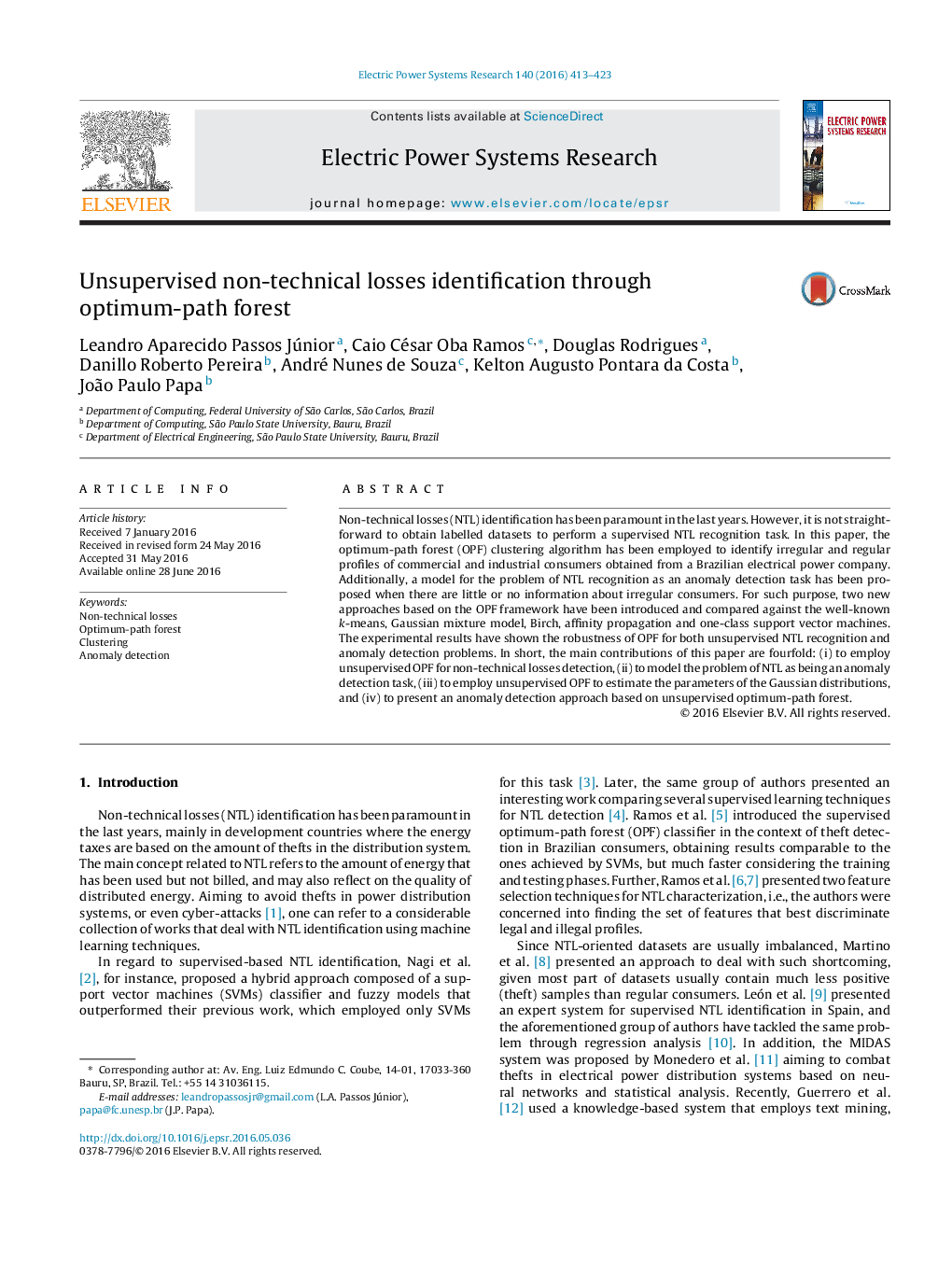| Article ID | Journal | Published Year | Pages | File Type |
|---|---|---|---|---|
| 5001362 | Electric Power Systems Research | 2016 | 11 Pages |
Abstract
Non-technical losses (NTL) identification has been paramount in the last years. However, it is not straightforward to obtain labelled datasets to perform a supervised NTL recognition task. In this paper, the optimum-path forest (OPF) clustering algorithm has been employed to identify irregular and regular profiles of commercial and industrial consumers obtained from a Brazilian electrical power company. Additionally, a model for the problem of NTL recognition as an anomaly detection task has been proposed when there are little or no information about irregular consumers. For such purpose, two new approaches based on the OPF framework have been introduced and compared against the well-known k-means, Gaussian mixture model, Birch, affinity propagation and one-class support vector machines. The experimental results have shown the robustness of OPF for both unsupervised NTL recognition and anomaly detection problems. In short, the main contributions of this paper are fourfold: (i) to employ unsupervised OPF for non-technical losses detection, (ii) to model the problem of NTL as being an anomaly detection task, (iii) to employ unsupervised OPF to estimate the parameters of the Gaussian distributions, and (iv) to present an anomaly detection approach based on unsupervised optimum-path forest.
Related Topics
Physical Sciences and Engineering
Energy
Energy Engineering and Power Technology
Authors
Leandro Aparecido Passos Júnior, Caio César Oba Ramos, Douglas Rodrigues, Danillo Roberto Pereira, André Nunes de Souza, Kelton Augusto Pontara da Costa, João Paulo Papa,
